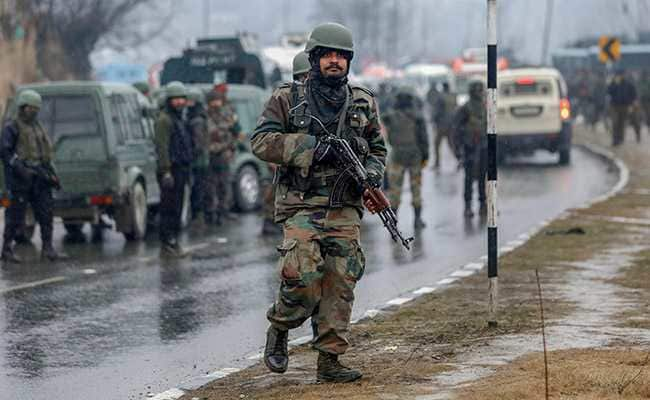Beyond Pulwama: Visuals That Reflect The Disturbing Truth About Kashmir

The visuals beamed into our homes reveal to us the reality of Kashmir. And they don’t paint a happy, reassuring picture of the valley.
Hundreds, nay thousands, of ordinary Kashmiris across age barriers throng funerals to mourn slain militants. Masked youth chase passing armoured vehicles and hurl stones at them. Stone-pelters engage in street fight with defence personnel to shield trapped terrorists. Young boys barely into their teens pose with fake Kalashnikovs to turn into instant social media heroes. Some raise the ISIS flag to rile the excitable, hyper-patriotic television anchor in a studio in Delhi.
The message emanating from the visuals is discomforting to say the least. People in the valley have lost respect for the muscle power of the Indian forces and the Indian state. Having grown amid guns, sound of jackboots, body searches and bloody encounters, they are all too familiar with the dire circumstances of their existence and seem not scared of the prospect of a showdown any more. They won’t let the consideration of tough consequence overwhelm their actions. If the resistance is not active, it can be passive. The gathering at the funerals is one example.
The most disturbing part of the message, however, is India has, by acts of omission or commission, inadvertent or deliberate, managed to alienate Kashmiris. The relationship between both was tenuous to begin with given the baggage of history, but it was papered over by considerations of economic pragmatism and through people-to-people interactions at several levels. The interactions happened at a largely superficial level, but nevertheless served as a bridge.
The visuals suggest that the bridge, riddled with many hypocrisies, double standards and faux hope as it maybe, has collapsed. India has become more distant from Kashmir over the last few years and any hope for normalisation has gone far from sight. The large-scale involvement of the young makes the prospect nearly impossible. The latest trend in the valley indicates to a clear generational shift. Those at the heart of protests are reasonably educated, social media savvy and clearly well-informed on the power of networking. To make matters worse, they have little faith in the political leadership of the valley. They have emerged an amorphous entity with immeasurable potential.
Pakistan remains a constant in the troubles in Kashmir. This needs no overstating. However, the point is ISI and its stooges cannot wage its asymmetrical war on India without active support from locals. The local knowledge of the terrain and social networks play an important role. Imagine the Pulwama attack, which claimed around 40 lives of CRPF personnel. An attack of such magnitude could not have taken place without local help, both moral and logistical.
Experts believe it was colossal intelligence failure that resulted in this incident, and the earlier ones, including Pathankot, Uri, and Nagrotta too. It is commonsensical that intelligence gathering gets tough when the general sentiment is hostile. The agencies find it difficult to penetrate the many silos and networks that offer protection to outsiders and facilitate their activities. It is obvious that an angry, alienated population has created a fertile ground for the actions of Pakistan-based agencies.
How did things come to this pass? That is a subject for deeper analysis. The fact as it stands is an already fraught situation has gone worse. A way out will be a massive challenge. Looking at the problem solely as a military or law and order problem, as the current dispensation tends to do, is not likely to be productive. Neither can be surgical strikes aimed at neutralising militants across the border. This option can only be exercised sparingly and only as a surprise element.
And can the government afford to antagonise an entire population and still hope to be successful? Would not a carrot-and-stick policy work better? Perhaps better minds are already at work to resolve the conundrum. But for the moment, the visuals of young men attacking military vehicles and ordinary Kashmiris, including women and children, thronging funeral sites should spur introspection. The message must not be overlooked.
[Disclaimer: The views expressed by the author are his own and do not necessarily represent those of the web portal]

Comments are closed.